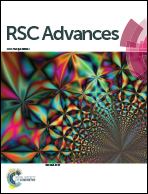Corrosion of silver alloys in sulphide environments: a multianalytical approach for surface characterisation
Abstract
Sterling silver samples, prepared to simulate cultural heritage surfaces, were subjected to accelerated ageing tests through exposure to sulphide containing environments. Data obtained by X-ray diffraction, ultraviolet-visible spectrophotometry, contact angle goniometry, ellipsometry and scanning electron microscopy revealed, contrarily to what has been suggested, that the colour of corroded surfaces is related to the thickness of the corrosion layer and to the multi-layer structure of various corrosion products. At the early stages of corrosion, Cu prevails over the Ag compounds. In subsequent stages, AgCuS complexes were also detected. Ag2S is the prevailing corrosion product after longer periods of time.


 Please wait while we load your content...
Please wait while we load your content...